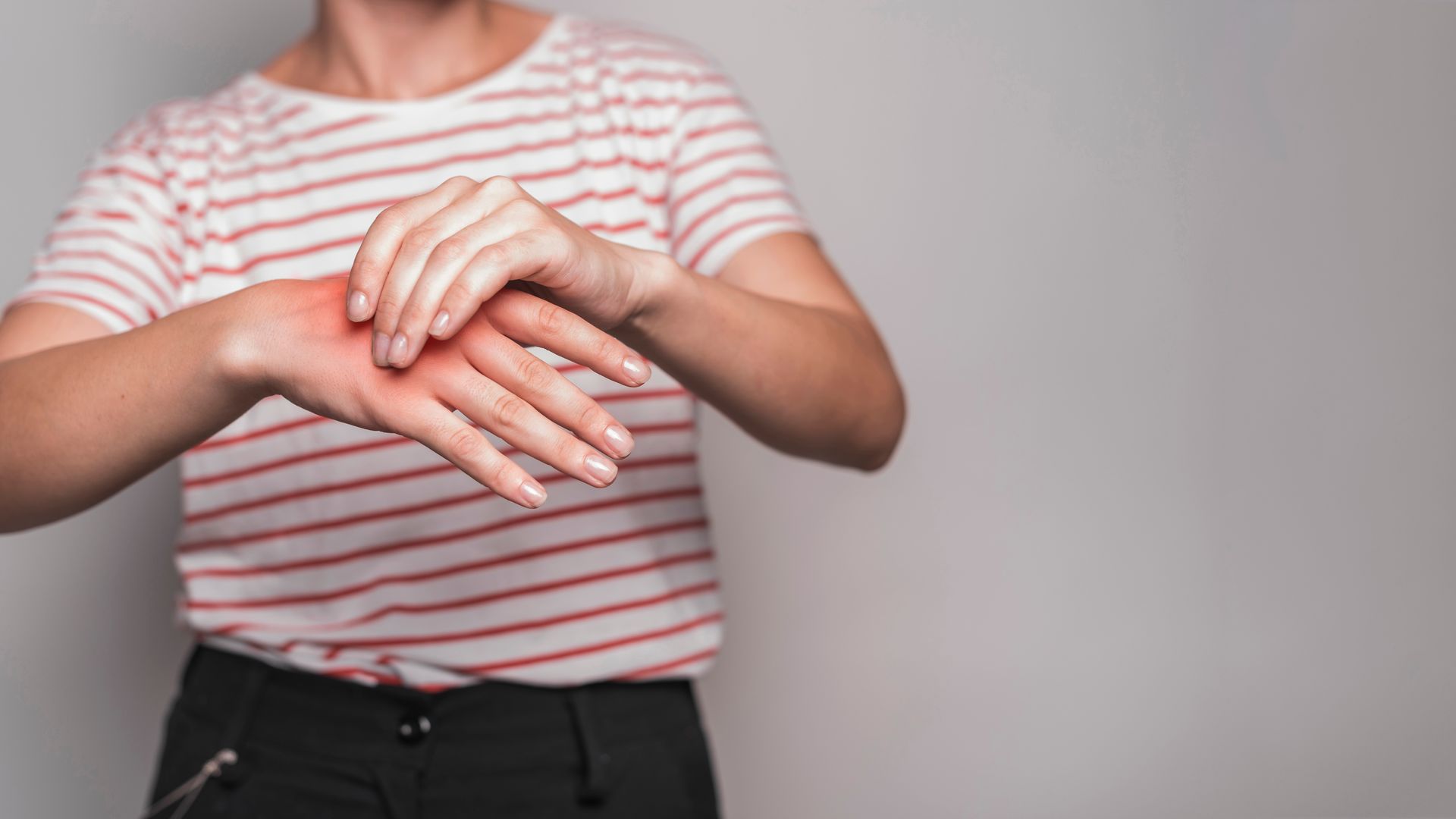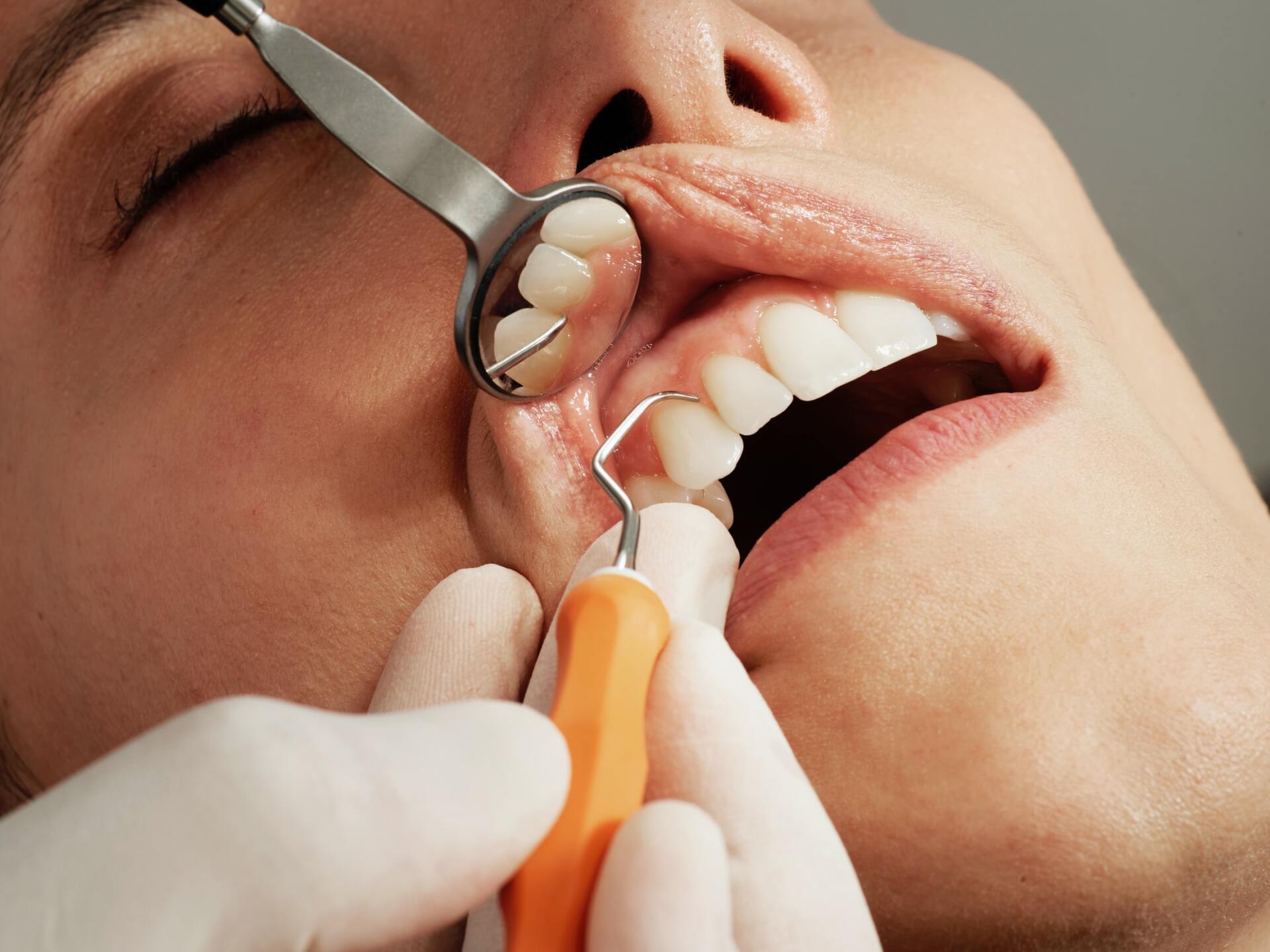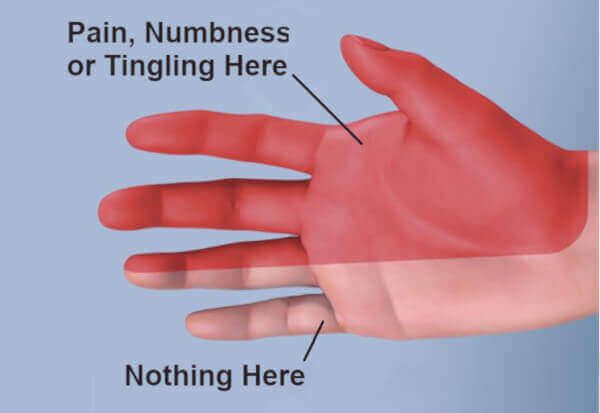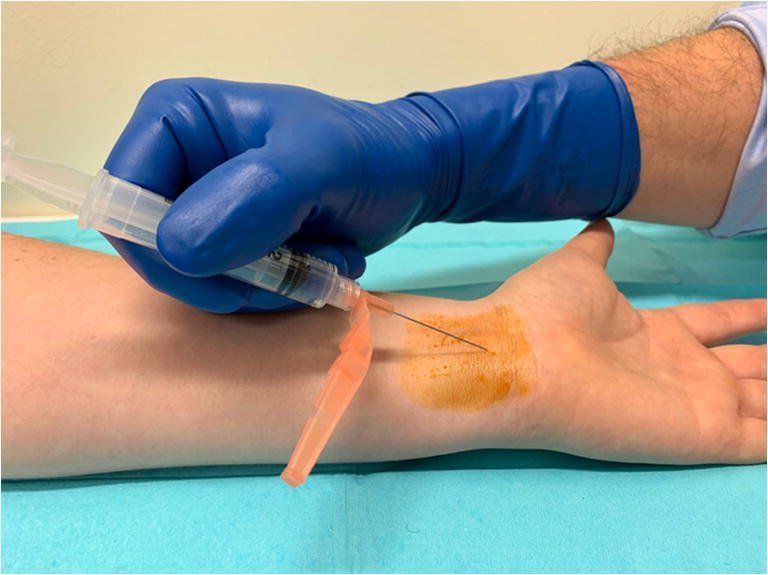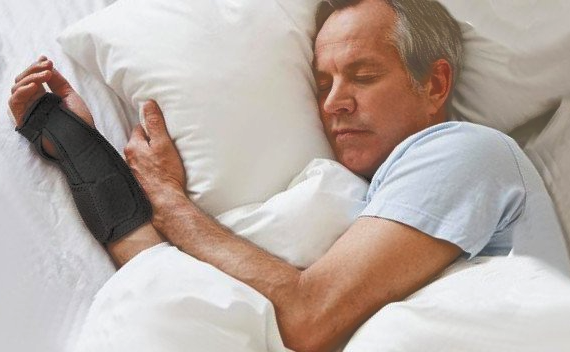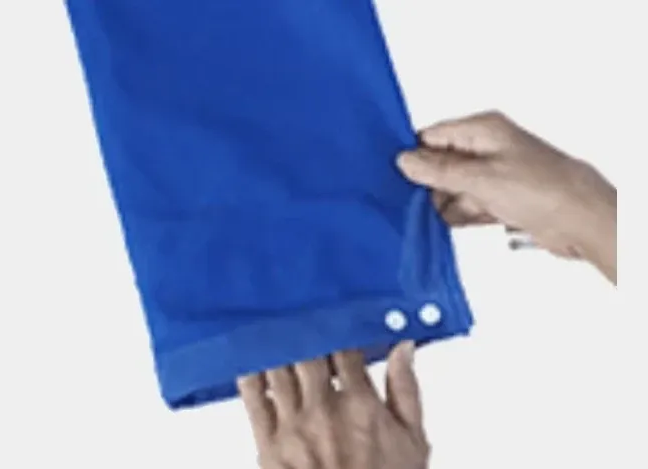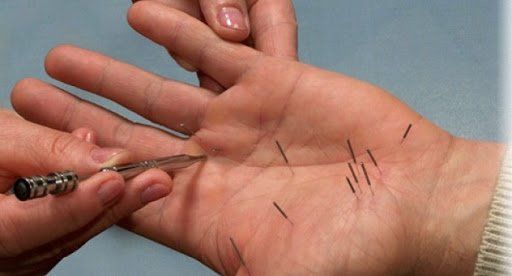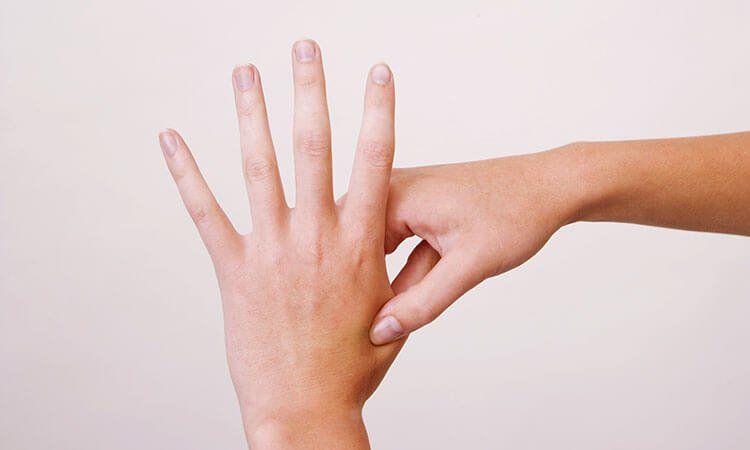How to Get Carpal Tunnel Relief Without Surgery
Table of Contents
- Key Takeaways
- Introduction
- Understanding Carpal Tunnel Syndrome
- How Carpal Tunnel Develops
- Recognizing the Symptoms
- 9 Proven Nonsurgical Ways to Get Carpal Tunnel Relief
1. Steroid Injections
2. Stretching Exercises
3. Myofascial Release Massage
4. Wrist Bracing (Night-Only)
5. Applied Heat Therapy
6. Yoga for Carpal Tunnel Relief
7. Acupuncture
8. Acupressure
9. Vitamin B6 Supplements
- The Best Combination for Lasting Relief
- When to Seek Professional Help
- Summary
- FAQs
- Sources
- About
Dr. M. Zannakis | The CarpalRx
The best way to get
carpal tunnel relief without surgery is to combine myofascial massage, heat therapy, stretching, and night-time bracing. These natural methods ease pain and restore hand strength safely.
Key Takeaways
- Over 90% of patients find
carpal tunnel relief without surgery.
- Combine massage, heat, stretching, and night bracing for best results.
- Avoid daytime bracing—it can worsen strain.
- Persistent or severe symptoms need professional evaluation.
Introduction
If you’re living with carpal tunnel syndrome, relief isn’t something you can put off until tomorrow. The pain, tingling, and weakness in your hands can make everyday tasks exhausting — and sometimes frightening. You may struggle to open jars, button shirts, or even sleep through the night without waking up to shake your hands out.
The good news is that you don’t have to rush into surgery.
The
American Academy of Orthopedic Surgeons (AAOS) recommends trying nonsurgical options first — and for good reason. Studies show that over
90% of patients find effective carpal tunnel relief through conservative treatments, while surgical outcomes often disappoint: nearly
40% of patients remain unsatisfied even two years after surgery.
Let’s explore what carpal tunnel syndrome really is, why it happens, and the 9 proven ways to relieve it naturally — without going under the knife.
Understanding Carpal Tunnel Syndrome
Carpal tunnel syndrome (CTS) is one of the most common nerve compression disorders of the hand. It occurs when the
median nerve, which runs from your forearm into your palm, becomes compressed within a narrow passageway in the wrist known as the carpal tunnel.
Inside this tunnel lie the
tendons that bend your fingers. These tendons are wrapped in protective sheaths that allow smooth gliding during hand movement. But when these tendons are overused or injured, their protective lining swells and thickens, reducing the available space in the tunnel.
The result? The swollen tendons begin pressing directly against the median nerve — producing pain, tingling, and numbness that can radiate from the wrist up to the shoulder.
How Carpal Tunnel Develops
To understand how to achieve carpal tunnel relief, it’s important to know what causes the problem in the first place.
Your hands are built for constant motion, but repetitive or forceful use can create microscopic tears in the tendon sheaths. Normally, the body repairs these injuries effortlessly. However, if the strain continues — such as with long hours of typing, gripping tools, or performing repetitive tasks — these microtears never fully heal. Instead, they form
adhesions: tiny patches of scar tissue that restrict the tendons’ movement.
Over time, these adhesions build up, the tendons swell, and the confined carpal tunnel space becomes crowded. The pressure on the median nerve increases, triggering pain, numbness, weakness, and sensory changes in the thumb, index, and middle fingers.
Over 5 million Americans have carpal tunnel syndrome. The occupations and hobbies that often lead to chronic tendon stress include:
When untreated, the constant nerve compression can lead to
permanent nerve damage, muscle atrophy in the thumb, and the dreaded “claw hand” deformity — where the fingers curl and lose strength.
In some people, the repetitive stress injury is serious. Over the long term, the injury cannot be naturally healed. More importantly, when tendon swelling due to stress occurs in the wrist joint, the result is carpal tunnel syndrome.
The reason this location results in carpal tunnel syndrome is because the swollen tendons are right next to the
median nerve. This major nerve of the hand is susceptible to pressure. And that pressure comes from the adjacent swollen tendons.
As the tendons swell more and more, they exert greater pressure on the median nerve. This is what causes all of the unpleasant
symptoms of carpal tunnel syndrome.
Recognizing the Symptoms
The
early signs of carpal tunnel syndrome are subtle but easy to identify once you know what to look for.
Most people notice
pain,
numbness or
tingling in the thumb, index, and middle fingers — never the pinky. These sensations often appear at night, waking you up with the urge to “shake out” your hand.
Other hallmark symptoms include:
- Burning or
electric-shock sensations in the palm
- Weak grip or clumsiness (dropping objects)
- A feeling of puffiness in the fingers, even without swelling
- Pain radiating up the forearm toward the elbow or shoulder
As the condition progresses, these symptoms become constant. Many patients lose their ability to sense temperature changes or fine touch — a dangerous stage that can result in accidental burns or injuries.
9 Proven Nonsurgical Ways to Get Carpal Tunnel Relief
The following nine methods are recognized by the
NIH and
AAOS as effective ways to relieve pain, restore function, and reduce inflammation — all without surgery.
1. Steroid Injections
2. Stretching Exercises
3. Myofascial Release Massage
4. Wrist Bracing (Night Only)
5. Applied Heat Therapy
6. Yoga for Carpal Tunnel Relief
7. Acupuncture
8. Acupressure
9. Vitamin B6 Supplements
The Best Combination for Lasting Relief
The most effective strategy combines several of these therapies:
heat + myofascial release massage + stretching + night-time bracing.
Together, they reduce tendon swelling, restore motion, and ease nerve pressure naturally—often within a month.
When to Seek Professional Help
If your symptoms persist for more than a 4 weeks or you notice worsening pain, numbness or weakness, see a healthcare provider.
They can confirm that you truly have carpal tunnel syndrome. And they can guide you toward advanced nonsurgical options like
CarpalRx Therapy, which targets the root cause of median nerve compression.
Summary
Of the 8 most common nonsurgical carpal tunnel relief treatments, some are more effective than others. By far, most will yield superior results compared to carpal tunnel surgery. The better treatments include steroid shots, myofascial release massage, nocturnal wrist bracing, heat therapy, and yoga. Acupuncture, acupressure, and vitamin B6 supplements are less effective, and certainly not long-term solutions.
FAQs
1. What is the fastest way to get carpal tunnel relief?
The quickest way to relieve carpal tunnel pain is to
rest the wrist, massage it, apply gentle heat, and wear a night brace to keep the hand in a neutral position. Adding light stretching or myofascial release massage can ease swelling and restore comfort within days.
2. Can carpal tunnel heal naturally without surgery?
Yes. In most cases,
carpal tunnel syndrome improves naturally
with consistent nonsurgical treatments like massage, heat therapy, stretching, and night bracing. These methods relieve pressure on the median nerve so healing can occur over time.
3. How long does it take to get carpal tunnel relief without surgery?
Mild to moderate cases often improve within
3–6 weeks of regular home therapy. Severe cases may take longer but can still benefit greatly from daily heat, massage, and brace use. Consistency is key for long-term carpal tunnel relief.
Sources
1) https://pubmed.ncbi.nlm.nih.gov/9820263/
2) https://pubmed.ncbi.nlm.nih.gov/9820263/
3) https://pubmed.ncbi.nlm.nih.gov/9820263/
About


